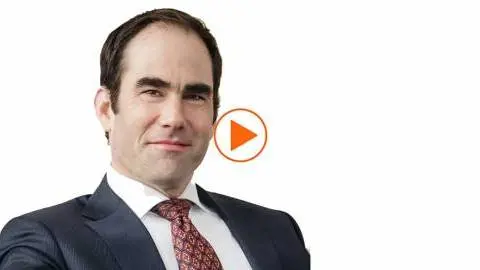Eurozone in 2021: Digital, fiscal and monetary changes
A double-dip in the eurozone has become almost inevitable. But despite all the government support to soften the blow to the economy, the structural face of the crisis will emerge next year. We think there is more in the offing for the eurozone in 2021, and here is what you should watch out for
Key Themes in 2021
- Digitalisation is key to a sustained recovery and investments in the digital economy could be the 2021 game-changer for more convergence in the eurozone.
- With the need for more growth-oriented public investments, a discussion around more fundamental reform of the fiscal rules for the bloc.
- Expect the ECB to follow in the footsteps of the Fed and apply the principle of symmetry to its inflation target.
Digitalisation is key to a sustained recovery
During the peak of the first wave, we looked at the vulnerability of eurozone countries to a prolonged Covid-19 slump, which showed that the old eurozone periphery has a larger chance of a weak recovery than core or northern economies. Looking beyond the pace of the immediate recovery, sustainable growth seems to be more dependent on digitalisation due to the crisis. This means that countries that have an edge in terms of digitalisation are even more likely to have a stronger structural growth path.
The digital economy is weaker in the eurozone's periphery, but EU funds could help
Among the countries that do best according to the Eurostat’s Digital Economy and Society Index are Finland, Netherlands and Ireland. Greece, Italy and Portugal are among the weakest. Sound familiar? This means that digital infrastructure, connectivity, integration of digital technology, etc. could be as decisive for eurozone divergence and convergence as fiscal and monetary policies.
There is one upside for 2021 though, which is that the Recovery and Resilience Fund has an investment in digitalisation as a requirement for disbursement of the grants. Investments in the digital economy could be the 2021 game-changer for more convergence in the eurozone.
Fiscal rules to change once again?
One remarkable game-changer of the crisis has been the U-turn of fiscal policy.
Between 2008 and 2012, the preferred policy prescription to tackle the crisis was structural reforms and austerity, but from the start of this crisis, eurozone governments have opened their pockets big time and the second lockdown should trigger additional stimulus.
Add to that the likely losses on governments’ guaranteed loans, it becomes clear that budget deficits will still be above 6% of GDP in 2021 after close to a 10% deficit this year. At the same time, the debt level in the eurozone will rise above 106% of GDP, more than 20 percentage points higher than in 2019.
And there is more. Thanks to the so-called ‘escape clause’, the fiscal rules of the Stability and Growth pact have been put aside at least until 2021. In our view, this temporary waiver could once again open the door for a more fundamental discussion about the fiscal rules in the eurozone. This discussion is even older than the monetary union itself and there have been many attempts and actual changes to the rules. However, with the need for more growth-oriented public investments and the seeds for a eurozone budget now planted in the form of the European Recovery fund, 2021 could bring a more fundamental reform of the fiscal rules.
2021 – The year the Phillips curve finally died in the eurozone
While currently, it is still all hands on deck for the ECB to support the eurozone economy and bring inflation expectations and projections finally back to target, the second half of the year could see an unexpected twist. At the end of the ongoing strategy review, we expect the ECB to follow in the footsteps of the Fed and apply the principle of symmetry to its inflation target, without going all the way and deciding on an average inflation target.
We expect the ECB to announce a new definition of its ‘below but close to 2%’ to ‘around 2%’, however, the question will be whether this 2% target will be credible as structural forces continue to weigh on inflation. As such the link between unemployment and the inflation rate - the so-called Phillips curve, has flattened.
Is the Phillips curve dead?

The Covid-19 induced acceleration of digitisation, which is putting pressure on employment in some sectors, will only reinforce this trend. If the ECB sticks to the 2% target and makes it even more symmetric, this would suggest an ultra-accommodative monetary policy for even longer than the current ‘very long’.
Download
Download article
20 November 2020
The Eurozone in 2021 This bundle contains 12 articlesThis publication has been prepared by ING solely for information purposes irrespective of a particular user's means, financial situation or investment objectives. The information does not constitute investment recommendation, and nor is it investment, legal or tax advice or an offer or solicitation to purchase or sell any financial instrument. Read more






